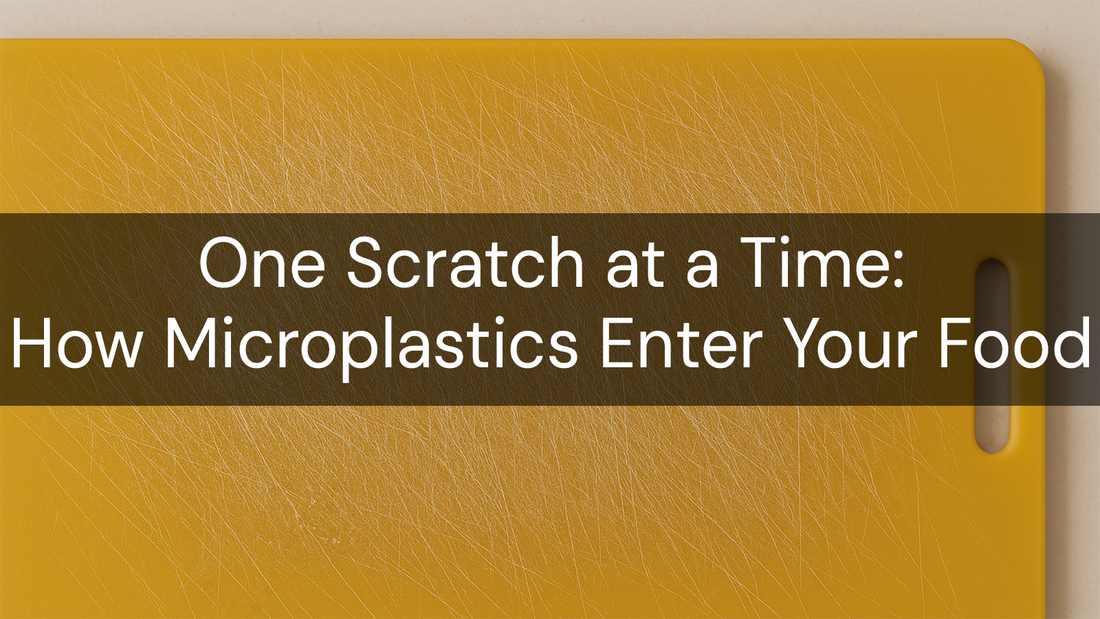
Are Plastic Chopping Boards Shedding Microplastics Into Your Food?
If your cutting board is made of plastic, you might be ingesting more than just your dinner.
Most of us don’t think twice about our chopping boards. But every slice, chop, and dice on a plastic surface can cause microscopic particles to flake off and make their way into your food. Yes - that means your plastic chopping board could be shedding microplastics right onto your plate.
Let’s take a closer look at how this happens, why it matters for your health, and what you can do to make your kitchen a cleaner, safer space.
What are microplastics, and how do they end up in your food?
Microplastics are tiny plastic fragments (usually less than 5mm) that come from the breakdown of larger plastic items. They're found in oceans, soil, water - and increasingly, in our food.
Plastic chopping boards, especially the well-used ones, can degrade over time. Every time you use a sharp knife on a plastic board, you're wearing down its surface. A 2020 study published in Environmental Science & Technology found that plastic cutting boards can release tens of thousands of microplastic particles per use.
That’s not just a kitchen quirk - it’s a potential health concern.
Are microplastics harmful to your health?
While research is still ongoing, recent studies suggest microplastics may:
- Trigger inflammation and oxidative stress
- Disrupt hormone function (as endocrine disruptors)
- Interfere with gut health and digestion
A 2024 review in Frontiers in Environmental Science highlighted growing evidence that regular microplastic ingestion may lead to long-term metabolic and immune disruptions. So while one plastic particle won’t harm you, the repeated exposure over time is what adds up.
Why wood fiber chopping boards are a better choice
If you’re aiming for a cleaner, low-tox kitchen, switching to a wood fiber chopping board is a simple but powerful move. Here’s why:
- Less shedding, more safety: Wood fiber boards are highly durable and don’t flake off the way plastic does, even after years of use.
- Naturally antimicrobial: Studies show that wood surfaces naturally inhibit bacterial growth, unlike plastic, which can trap bacteria in surface grooves.
- Easier on your knives: Wood fiber boards are gentler on knife blades, meaning less maintenance for your tools and smoother food prep.
- Sustainable and eco-friendly: Made from compressed wood fibers and resin, these boards are often biodegradable and sustainably sourced.
How to tell if your chopping board needs replacing
Regardless of the material, here are some signs your board might be due for an upgrade:
- Deep grooves or cracks that trap food and bacteria
- Warping or splitting
- Visible stains or odours that won’t go away
If you're using an older plastic board that fits this description, it might be time to make the swap.
Small change, big impact
Reducing your microplastic exposure doesn't mean overhauling your entire lifestyle. It starts with small, intentional upgrades - and your chopping board is a perfect place to begin.
Want a cleaner kitchen setup? A wood fiber chopping board isn’t just a safer surface for food prep - it's a step toward a healthier, more mindful home.
